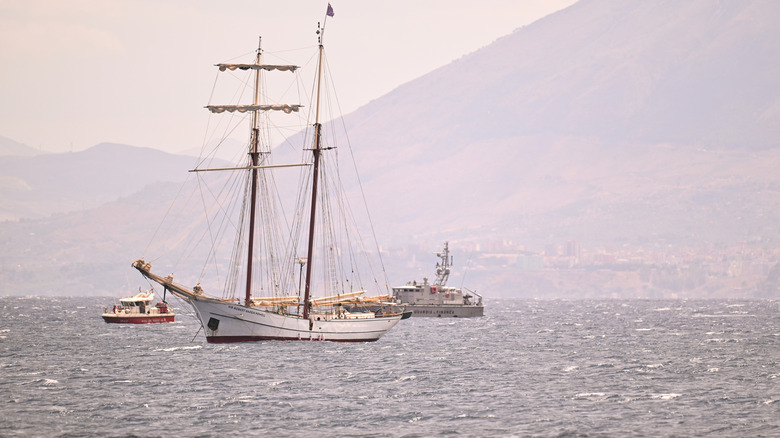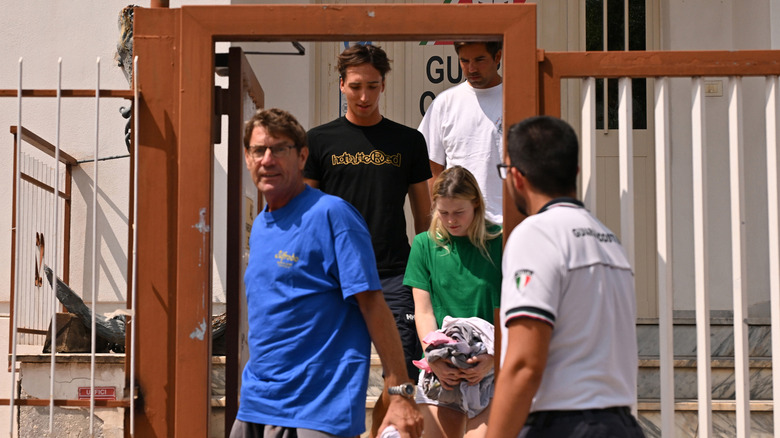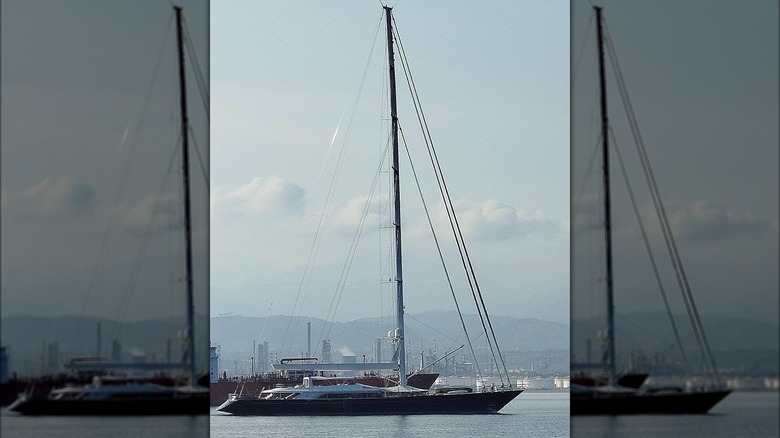Tragic Details Found In The Bayesian Yacht Disaster Autopsies
The autopsies of five of the seven people who died when the superyacht Bayesian sank off the coast of Sicily on August 19, 2004, concluded that they died from dry drowning, or suffocation. It's theorized that they were clinging to life by using an air pocket in the sinking ship, but eventually, the oxygen ran out. Fifteen other passengers and crew were rescued.
Victims of the sudden catastrophe that's attributed to a freak weather occurrence are the Yacht's owner, British Billionaire Mike Lynch, whose cause of death was listed as suffocation. Morgan Stanley banker Jonathan Bloomer, his wife Anne Elizabeth Judith Bloomer, American attorney Chris Morvillo, and his wife Neda Morvillo were all said to have died from dry drowning. Lynch's wife survived, but the couple's 18-year-old daughter, Hannah, was killed. Her autopsy was inconclusive but there were no injuries to her body.
According to The Telegraph, all of the deceased passengers' bodies were found inside the cabins on the left side of the Bayesian; Hannah was alone in one cabin while five others were discovered in a different cabin. The only crew member to die was Recaldo Thomas, who was working as the chef. His body was found "outside the vessel" according to People. He was the first victim rescuers located, and his cause of death was drowning.
How a mysterious weather event sank the Bayesian
The tragedy struck at about 5 a.m. as the yacht was anchored in 164-foot deep water near Sicily. Investigators think the boat was impacted by a downburst, which the National Weather Service says are winds that come down toward the Earth from storms and can cause as much damage as a "weak" tornado with speeds up to 110 mph. According to Boat International, witnesses said that off the coast ahead of the event, there were hurricane-like conditions, but it seems the dangerous weather was not forecasted locally. However, video of the yacht before it sank shows the lights of the mast went out as a storm raged in the area.
The sinking of the 56-meter (183-feet) sailing vessel was described by members of the crew that survived. According to Boat International, they said that the yacht began heeling, or tilting to the side, and progressively did so until water rushed onboard and soon overtook the Bayesian, sinking her in just 12 minutes. A boat captain told Boat International the yacht must have taken a "major ingress" of water to sink that fast, but investigators are still trying to piece together what happened.
[Featured image by Sfischer via Wikimedia Commons | Cropped and scaled | CC BY-SA 4.0]
Dry drowning and air pockets
Those who died while trapped in the cabins showed no signs of injury but their cause of death is explained by the theory that the five victims who were in the same cabin found an air bubble, but as they breathed, they used up all of the oxygen and the bubble became toxic due to the carbon dioxide the victims were exhaling, which causes suffocation.
Though the term "dry drowning" is being used to describe what happened to some of those killed on the Bayesian, it's not an actual medical term. According to the Red Cross, it's an old term that still lingers but the real cause of any death attributed to dry drowning or even actual drowning is a lack of oxygen. The amount of water in the lungs is secondary to the fact that we can not survive without oxygen. Cleveland Clinic explains that the term dry drowning is usually associated with a life-threatening incident in water in which a person does not get water in their lungs but a laryngeal spasm causes the airway to be blocked and the result is death from a lack of oxygen.
Manslaughter charges may be pending for the captain of the Bayesian, James Cutfield, and two other crew members. According to the BBC, sailor Matthew Griffith was on watch that night, and engineer Tim Parker Eaton was meant to secure the engine room and other elements of the ship. Some speculate that the yacht was not firmly secured leaving openings that allowed water to rush onto the boat faster.


